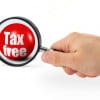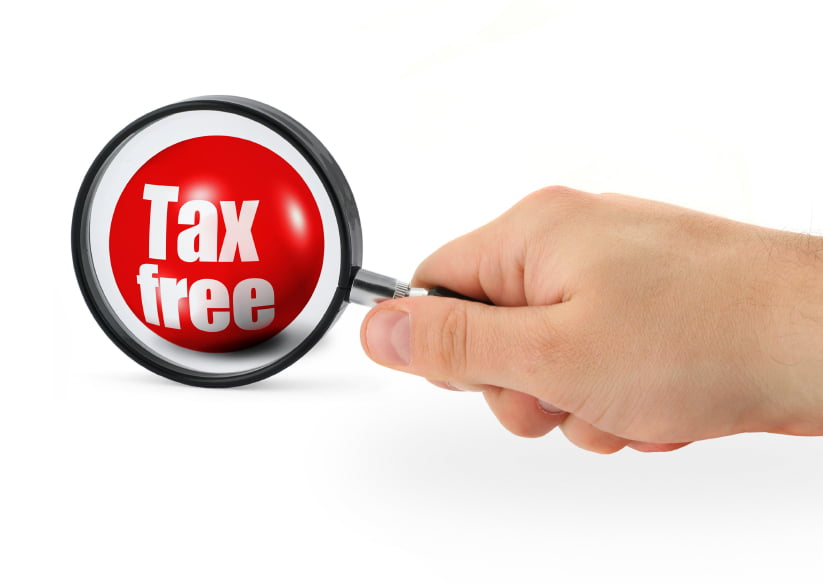
Tax-Free New York – Bad Tax Policy, Bad Economic Development Policy
June 11, 2013 |
 June 11, 2013. This brief concludes that Tax-Free New York is bad tax policy and bad economic development policy. From a tax policy perspective, the Tax-Free NY proposal is inconsistent with the two long-established pillars of tax fairness—horizontal equity and vertical equity. In addition, New York State’s past experience with geographically-targeted business tax incentives should raise huge red flags regarding the efficacy of the proposal as an economic development strategy.
June 11, 2013. This brief concludes that Tax-Free New York is bad tax policy and bad economic development policy. From a tax policy perspective, the Tax-Free NY proposal is inconsistent with the two long-established pillars of tax fairness—horizontal equity and vertical equity. In addition, New York State’s past experience with geographically-targeted business tax incentives should raise huge red flags regarding the efficacy of the proposal as an economic development strategy.
Besides being diametrically opposed to the principles of tax fairness, the idea of exempting the personal incomes of the employees of favored businesses from the Personal Income Tax would also undercut one of the main arguments for state-level business tax breaks—that businesses receiving those tax breaks might not be paying full taxes but by those businesses locating in our state rather than somewhere else, we benefit from a broader and stronger personal income tax base.
But even if the Tax-Free NY proposal were revised to exclude this unprecedented exemption of favored employees from Personal Income Taxation, it would still have more risks and costs than benefits. The claim that Tax-Free NY proposal has no cost is incorrect for five reasons that are spelled out in this brief. For example, by giving very favorable tax treatment to some business activities, the Tax-Free NY plan would reduce the market share of some existing businesses that do not receive this favored treatment. This, in turn, will reduce the profitability of those existing businesses and, thus, their tax liability. The favored businesses will not be paying taxes on their covered activities; and the negatively affected existing businesses will be paying less because of diminished income or closure. This will mean some combination of tax increases and service cuts for other businesses and for residents—a costly, downward spiral rather than a no-cost nirvana.
The brief also reviews the state’s experience with two previous experiments with tax-free zones. It concludes that, in retrospect, it is shocking that the Economic Development Zones program was established in 1986 only three years after the failed Job Incentive Program was closed to new entrants. And that now, it is even more shocking that a new tax-free zones program is being proposed only three years after the failed Empire Zones program was closed to new entrants. To paraphrase the philosopher George Santayana, those who fail to learn the lessons of history are doomed to repeat the mistakes of their predecessors. Or, as former Assembly Speaker Stanley Fink frequently said, “Fool me once, shame on you. Fool me twice, shame on me.”

Tax-Free New York – Bad Tax Policy, Bad Economic Development Policy
June 11, 2013 |
 June 11, 2013. This brief concludes that Tax-Free New York is bad tax policy and bad economic development policy. From a tax policy perspective, the Tax-Free NY proposal is inconsistent with the two long-established pillars of tax fairness—horizontal equity and vertical equity. In addition, New York State’s past experience with geographically-targeted business tax incentives should raise huge red flags regarding the efficacy of the proposal as an economic development strategy.
June 11, 2013. This brief concludes that Tax-Free New York is bad tax policy and bad economic development policy. From a tax policy perspective, the Tax-Free NY proposal is inconsistent with the two long-established pillars of tax fairness—horizontal equity and vertical equity. In addition, New York State’s past experience with geographically-targeted business tax incentives should raise huge red flags regarding the efficacy of the proposal as an economic development strategy.
Besides being diametrically opposed to the principles of tax fairness, the idea of exempting the personal incomes of the employees of favored businesses from the Personal Income Tax would also undercut one of the main arguments for state-level business tax breaks—that businesses receiving those tax breaks might not be paying full taxes but by those businesses locating in our state rather than somewhere else, we benefit from a broader and stronger personal income tax base.
But even if the Tax-Free NY proposal were revised to exclude this unprecedented exemption of favored employees from Personal Income Taxation, it would still have more risks and costs than benefits. The claim that Tax-Free NY proposal has no cost is incorrect for five reasons that are spelled out in this brief. For example, by giving very favorable tax treatment to some business activities, the Tax-Free NY plan would reduce the market share of some existing businesses that do not receive this favored treatment. This, in turn, will reduce the profitability of those existing businesses and, thus, their tax liability. The favored businesses will not be paying taxes on their covered activities; and the negatively affected existing businesses will be paying less because of diminished income or closure. This will mean some combination of tax increases and service cuts for other businesses and for residents—a costly, downward spiral rather than a no-cost nirvana.
The brief also reviews the state’s experience with two previous experiments with tax-free zones. It concludes that, in retrospect, it is shocking that the Economic Development Zones program was established in 1986 only three years after the failed Job Incentive Program was closed to new entrants. And that now, it is even more shocking that a new tax-free zones program is being proposed only three years after the failed Empire Zones program was closed to new entrants. To paraphrase the philosopher George Santayana, those who fail to learn the lessons of history are doomed to repeat the mistakes of their predecessors. Or, as former Assembly Speaker Stanley Fink frequently said, “Fool me once, shame on you. Fool me twice, shame on me.”
